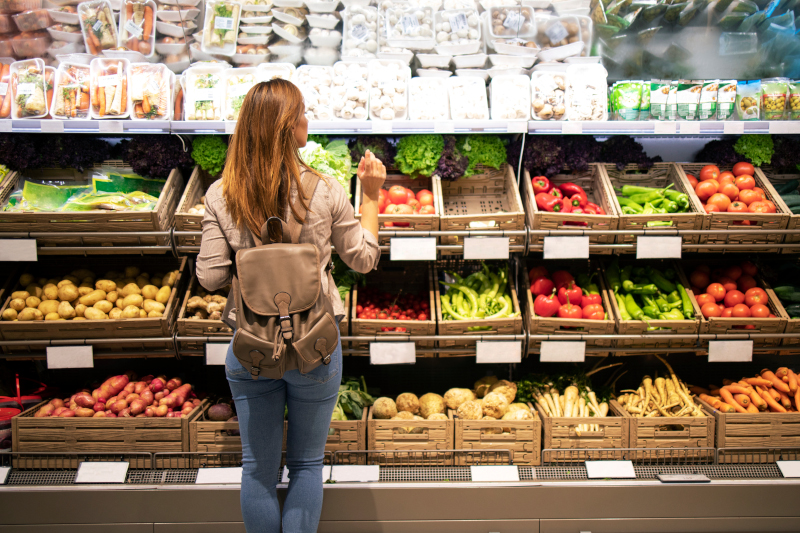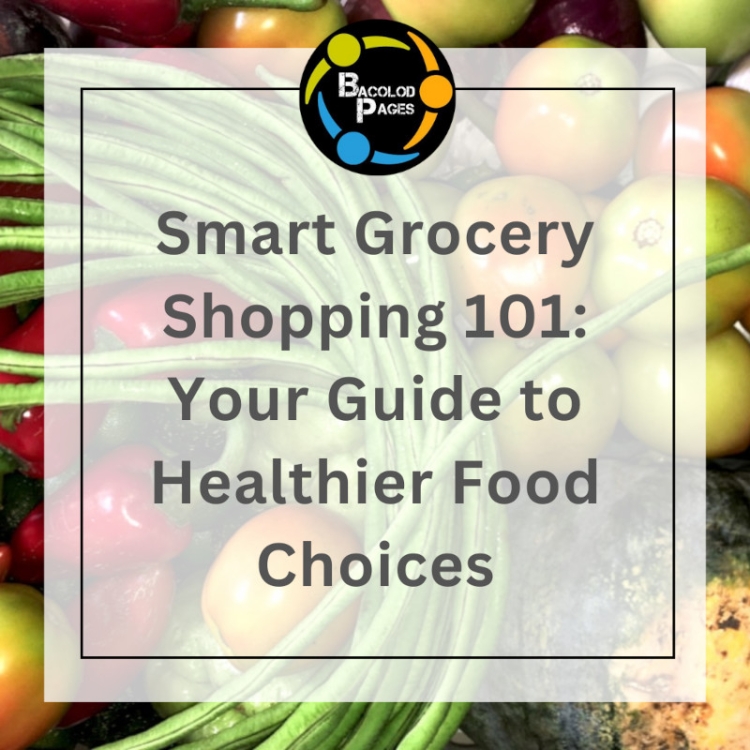Smart Grocery Shopping 101: Your Guide to Healthier Food Choices
Grocery shopping is one chore that everyone has to do at some point, but not many people enjoy it.
It is important to remember that healthy eating does not have to be sacrificed.
Grocery shopping provides an opportunity to take charge of your diet, nourish your body, and make healthier food choices.
Food is the fuel that your body requires to function on a daily basis. It's important to remember that healthy eating has an impact on how well your body functions.
With rising prices of everything — including groceries — it can feel like there are so many options, but not enough time to choose healthy items that don't cost a fortune or prepare enough meals to last the week.
Fortunately, this does not have to be the case. Here's how to make the most of your grocery trip so you end up with more nutritious food, less stress, and more saved-up money.

1. Go with a plan
The first step is to plan your meals. Without a meal plan, you won't know what to buy or what to put in your shopping list.
Make a list of the ingredients for the meals you'll be preparing over the next week before you go shopping. You can learn more about meal planning in our previous blog post: How To Meal Plan 101
Planning your meals ahead of time is a great way to avoid purchasing unnecessary items and reduce food waste. Knowing what you'll be cooking for the week allows you to buy only what you'll need and avoid purchasing ingredients that you may not need.
Make a detailed list of the items you need, categorizing them as produce, dairy, pantry staples, and frozen foods. It's easy to think you'll remember everything you need while browsing the store, but there's bound to be something you forget while shopping. This list not only keeps you on track, but it also keeps you from making impulsive purchases.
Before you go shopping, go through your pantry, make sure you have the staples you use, and double-check if you already have the things you need.
This will not only save you money, but it will also make your kitchen less cluttered because you won't have nonperishable food items collecting dust.
2. Read labels
The information on food labels is the key to making informed decisions about the products you buy. Learning how to read and understand nutrition labels will help you choose foods that are healthy for you and your family.
When reading nutrition labels, look for items with fewer ingredients that you know and can pronounce. This is because sugar, sodium, and fat are frequently referred to by different names. Even products labeled "all-natural" or "organic" can contain hidden fats, sugar, sodium, or calories.
Make sure to pay attention to the following food labels.
Serving Size:
Check the serving size first, as all other information is based on it. It helps you determine how a specific food fits into your daily diet.
Calories:
Understand how many calories are in each serving. This figure will help you manage your daily calorie intake.
Nutrients to Limit:
Saturated and trans fats, sodium (salt), and added sugars are all nutrients to watch out for.
Try to avoid items that have refined (white) flour; high-fructose corn syrup; hydrogenated oils; preservatives; or artificial flavors, colors, or sweeteners. Processed foods tend to be higher in calories and are less likely to have the vitamins and minerals your body needs.
To maintain heart health and lower the risk of chronic diseases, limit these components.
Nutrients to Prioritize:
Prioritize foods high in essential nutrients like dietary fiber, vitamins (especially A and C), calcium, and iron. These all contribute to overall health and well-being.
Ingredients List:
Go over the ingredient list. The ingredients are listed in decreasing quantities. Choose products with fewer ingredients, preferably those that you can recognize and pronounce.
Food Allergies and In-tolerances:
Scan labels for allergens or ingredients to avoid if you have dietary restrictions.
3. Compare prices and buy in bulk
Don't just buy the first product you see. Take the time to compare prices between various brands and stores. To save money, look for deals, discounts, and promotions.
It's difficult to predict what specials or discounts your grocery store will provide to customers. But it's possible that your store offers special discounts to certain groups, such as seniors and students. Inquire about a discount card or a store membership program, as they often provide additional savings and special deals.
When comparing products, consider more than just the price. Take note of the unit price, which indicates the cost per unit or weight of the product. Smaller packages can sometimes be more expensive in the long run than larger ones. You can make a more informed decision and select the most cost-effective option if you check the unit price.
Consider buying in bulk if you have the storage space and use certain items frequently. Bulk purchases can save you money in the long run because unit prices are generally lower.
Here are some examples of products you can buy in bulk:
- Dry beans and lentils
- Rice and pasta
- Canned meats and fish, like chicken and tuna
- Dried fruits
- Raw nuts in the shell
- Frozen fruits and vegetables
- Cooking oils
4. Choose seasonal produce
Seasonal eating is one of the best ways to get the most nutrient-dense foods. When you buy foods in season, you are choosing food that is often more affordable than produce options that must be imported out of season. It's often less expensive, fresher, and tastes better too.
Make a produce list for fruits and vegetables, and you'll always know what's in season.
You can go buy your weekly fruits and vegetables at Bacolodpages.com and have them delivered right to your doorstep
Not only will you save money, but you will also eat the healthiest food available.
5. Check food quality
Even the most vigilant stores have moldy or expired items on their shelves. That's why, before buying a loaf of bread, always check the expiration date.
Stockers follow a first-in, first-out organizational principle (as should you). They keep new inventory behind old inventory. Many items, such as packaged foods or frozen foods, have long past their expiration dates. However, for dairy, produce, eggs, and other fresh foods, it's worth going to the back to get the item with the most distant expiration date.
This is also where your grocery list can help. If you know you won't be cooking for a few days, don't buy vegetables that seem ready to eat that day. They'll probably go bad before then.
If everything else fails and you over-purchase, you can freeze almost anything before it spoils. Just remember to double-check your freezer before your next shopping trip.
Conclusion
Smart grocery shopping benefits not only your wallet but also your overall health. You can master the art of grocery shopping by planning ahead, focusing on fresh and whole foods, reading labels, buying in bulk, selecting seasonal produce, sticking to your list, taking advantage of discounts, and shopping mindfully.
The grocery shopping tips listed above are simply starting points to get you started in the right direction. Once you've mastered it, you'll develop your own methods and styles that work best for you.
Remember, it's not just about filling your cart; it's about feeding yourself and your family nutritious and cost-effective options.
Take the time to shop healthfully to stay healthy. If you eat well, you will most likely also feel well.



